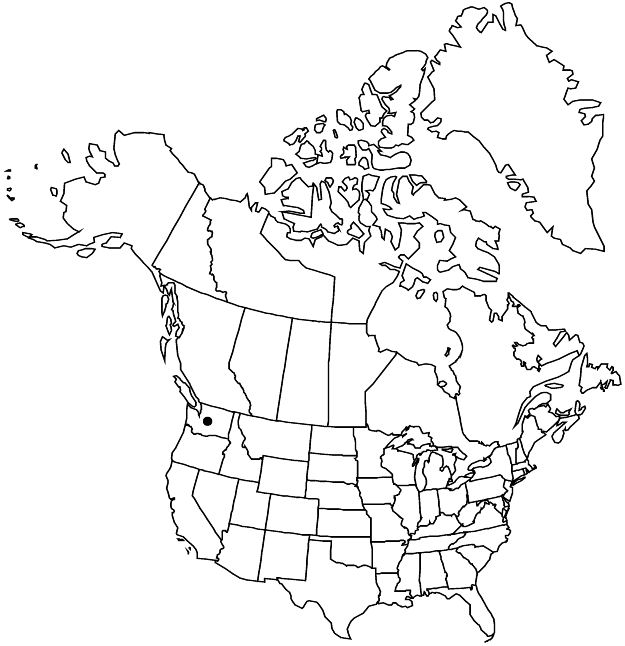Viola flettii
Erythea 6: 69. 1898.
Plants perennial, caulescent, not stoloniferous, 3–15 cm. Stems 1–3, ascending to erect, mostly glabrous, on caudex from fleshy rhizome. Leaves basal and cauline; basal: 1–3; stipules linearlanceolate, margins entire or with glandular processes, apex acuminate; petiole 1.5–9.7 cm, mostly glabrous; blade purple-tinted and –veined, broadly reniform to ovate, 0.9–2.4 × 1.2–4 cm, base cordate, margins finely crenate-serrate, eciliate, apex acute to obtuse, surfaces glabrous or sparsely pubescent along veins adaxially; cauline similar to basal except: stipules ovate to lanceolate, margins entire or shallowly laciniate; petiole 0.7–5.9 cm, usually glabrous; blade 0.8–2.1 × 1.2–3.1 cm. Peduncles 1.8–7.1 cm, usually glabrous. Flowers: sepals lanceolate, margins eciliate, auricles 0.5–1.5 mm; petals soft reddish violet on both surfaces, all with yellow area basally, lower 3 dark violet-veined, lateral 2 bearded, lowest with white around yellow area, 10–15 mm, spur yellow, gibbous, 0.5–2 mm; style head bearded; cleistogamous flowers axillary. Capsules ± spherical, 5–9 mm, glabrous. Seeds dark-brown to brownish purple, 2.5–3 mm.
Phenology: Flowering Jun–Aug.
Habitat: Alpine and subalpine rock crevices, vertical faces, talus slopes
Elevation: 1100–2000 m
Distribution

Wash.
Discussion
Viola flettii is endemic to the Olympic Mountains of northwestern Washington. C. S. McCreary (2005) noted that although morphologically and ecologically distinct, V. cuneata, V. flettii, and V. ocellata are closely related.
Selected References
None.
Lower Taxa
"thick" is not a number. "narrow" is not a number.